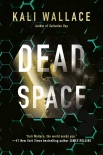Dead Space Kali Wallace (best non fiction books to read txt) 📖

- Author: Kali Wallace
Book online «Dead Space Kali Wallace (best non fiction books to read txt) 📖». Author Kali Wallace
Nothing moved. The entire factory was still and quiet. As far as I could tell, none of the machines were operational. I caught the scents of metal, rubber, fresh oil, fuel. A hint, perhaps, of smoke. It was as though the entire facility had fallen quiet just before I stepped inside and was now holding its breath.
I reached for my radio but hesitated before turning it on. I had been making plenty of noise already, with the creaking of the airlock and thunderous clang of the hatch, but speaking felt different. After too many seconds of indecision, I clipped the radio to my suit without saying anything. I needed to see more of the facility before I alerted anybody to my presence. I didn’t see any surveillance cameras or tracking units, but I couldn’t be sure they weren’t present. I needed to know who— or what—was out there listening.
Every motion I made felt too loud: the sticky-soft peel of the gecko soles, the crinkle of flexible polymer on my arms and legs, the sound of my neck rasping against the suit’s collar. I cast my light around and found two metal staircases leading down. I chose the one to the right, closer to where I thought the transport tunnel should come into the base, if I was understanding the layout correctly. The staircase had a skinny gate across the top, but it swung open easily on recently oiled hinges. The stairs creaked and trembled as I descended. I couldn’t even see how far down they went. I had no idea where a control room might be, or the entrance from Nimue’s transport tunnels, or the systems room and physical brain of the AI that ran the factory. All I could see were the steps before me and the machines around me.
I could also see, here and there, in glimpses and gaps, in flashes of illumination when my light turned, what those machines were building.
Weapons. The factory was building weapons, exactly as I had suspected, but suspecting a thing to be true was very different from seeing it firsthand. Winding around me, on both sides of the staircase, was a tangled braid of racks and conveyor belts, drawing from the hidden depths of the machines like tributaries joining a river that flowed toward the far side of the facility. Most of what I could see nearby appeared to be the incomplete pieces of products that would be completed and armed elsewhere. There was a line of missile casings standing upright like soldiers momentarily frozen midmarch. There were slender canisters with no markings or labels laid out like baguettes on a conveyor belt. I recognized the shape from history books and news reports: the UEN had used noxious gas loaded onto riot rovers to slip into crowds and quash Martian protests. Something about the blankness of those canisters, the complete lack of exterior markings, was so much more unsettling than a rainbow of warning labels would be.
I kept walking. Down the stairs, through the machines, gaping with growing horror at all I saw.
Egg-shaped devices that looked like beehives, with each cell glinting strangely. Fixed-winged drones like pinned butterflies. Armored rovers with empty gun mounts. Countless pieces, incomplete parts, devices I didn’t recognize. Wings, perhaps, or blades. The casings for small explosives. Sections of what I assumed were to be larger unmanned spacecraft, visible now only in shards of curved hulls and polished nose cones.
My mouth was tacky and dry, my heart beating quickly. I imagined this facility functional. Every machine chugging, every belt whirring. Bots I could not see piecing together these uncountable parts into whole and operational devices. I imagined all of these weapons loaded into transport containers. Ships coming to Nimue to carry them away—the crews would be told they were transporting water or fuel or precious metals. Shipments would spread throughout the outer system, carrying Parthenope’s weapons into every major port and station. All waiting for a signal from Parthenope—and what would that take? They were not building all of these weapons without a plan. Whatever that plan was, whatever conquest they wished to achieve, the spark to set it all in motion could be anything. A deal gone wrong. A treaty disregarded. A rivalry grown tiresome. So little. I did not know what they were waiting for, and that was as terrifying as not knowing what they intended to do.
I stared at all of it, committing it to memory with growing panic as I continued my descent into the facility. Another turn in the staircase, then another. There I spotted the first surveillance camera, but I couldn’t tell if it was working. I shifted my light from one hand to the other to test if the camera followed my motion. It remained still.
The light did catch, buried deep in the guts of a machine, the flat, reflective faceplate of a helmet. There was a line of mech suit helmets lined up on a belt, like disembodied heads, separated from their bodies.
The factory just kept going. It extended down and down and down, stretching into the depths of the asteroid, so ruthlessly efficient in its design it would have been impressive, if its purpose weren’t so terrible. I was growing impatient and frustrated. I was fairly confident the transport tunnels should be meeting the base somewhere ahead of me and to the right, but I had seen nothing like a control room for human crew, nor a systems room for an AI. I had not heard any sounds except my own footsteps and my own breath. The silence and the darkness weighed on me, turning that vast space





Comments (0)